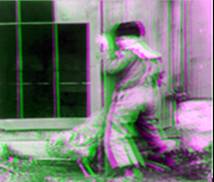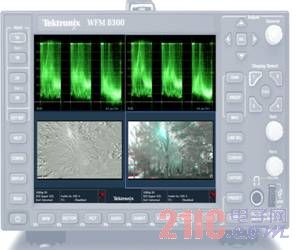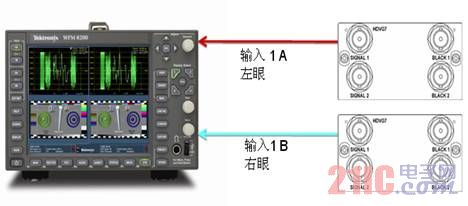There are two very important trends in the development of television: from standard definition to high definition HD, the resolution will be higher and higher; 3D technology to realize stereoscopic vision. In particular, 3D technology is an important trend in the development of TV technology for a long time to come.
3D, if you shoot and make it well, it will look very good, the scene is very strong and the picture is very impactful. Some 3D movies are realized through post-production. If they are not made well, they are not as good as 2D movies. Because 2D is converted into 3D by software, if there is no guarantee quality when turning, the effect is not necessarily better than 2D from the viewing angle. . Therefore, it is necessary to ensure that the 3D stereoscopic content produced is in line with the sensory feeling through some technical means.
This article refers to the address: http://
How does the human eye perceive 3D?
The important effect of 3D is the three-dimensional effect, because the parallax between the left and right eyes produces a so-called 3D effect, and the parallax has a certain range. If the parallax exceeds the range, it will produce a very bad visual experience, even watching 3D movies for a long time. It will be dizzy or uncomfortable. When shooting and post-production 3D movie TV, if you don't grasp the parallax or depth of field, you will have a similar discomfort experience. Of course, there is no good evidence that there will be any damage to 3D, but there will be discomfort.
The most traditional 3D glasses look at the 3D effect. If you don't wear glasses, you will have a very virtual picture. The cyan is in front of the red, or the red is in front of the blue. The red represents the picture seen by the left eye, and the blue represents the right eye. The picture to the screen. It is precisely because they have a certain level of difference and parallax at the level that leads to a 3D feeling, and the 3D picture will feel bad if it is not done well. The 3D that everyone sees in the cinema is not the red and green glasses. The TV at home will have active 3D glasses. Through interlaced scanning, the first scene is the picture of the left eye, the second field is the picture of the right eye. The left eye is equivalent to closing the right eye. Will get the picture of the left eye, the right eye will close the left eye, the image of the left eye and the right eye can be obtained through the active glasses, and finally the feeling of 3D in the mind, there are more 3D on the market now. TV. Seen in the cinema, the left eye passes the video through the horizontal and right eyes to each other. No matter which way, the most basic ones are the left eye and the right eye. A certain gap, the distance between the left and right eyes is between 60-65 mm.

Figure 1: The naked eye 3D effect.
The left eye and the right eye see a certain gap between the two pictures. The eyes of the person analyze the picture. Through the judgment of the human retina, the signals obtained by the left and right eyes form a three-dimensional feeling through the analysis of the brain, and the relationship between them is resolved. The relationship with the three-dimensional, the last is the 3D effect, which is the process by which the human eye perceives 3D through the sense. Someone raised a question. Can you feel the effect of 3D if you close one eye? In fact, the depth of the image needs to be perceived by both eyes. Sometimes it can be perceived by one eye. This information reveals the distance through 2D. It will provide some information to us, and the image will be revealed and covered. The part that uses this to judge who is in front and who is behind. When watching 3D movies, there are often images that run to the back of the screen. There are several scenes in "Rio Adventure". When the parrot learns to fly, it will rush to you. The effect is not always there, it is through the later stage. The production is made specifically. Beijing Tai did some 3D experiments and got some experience. It is easier to go to the screen and accept it. If the effect of going out is not very acceptable, everyone should consider the impact of the external impact when doing 3D effects. The ratio, that is, can't be done too much.
Some information sheets can only perceive its stereo depth, and we can see the effects of 3D, including texture changes, through light and dark changes. For example, if the flower is far away, it will be more visible. If you look at the close-up, you will be able to distinguish it. The farther away you are, the smaller the picture will be. You can perceive the depth of 2D through this information. We can also perceive the depth of 2D by the size of the object or the change in size. Motion parallax, when sitting in the car, the near object is in the opposite direction to us, and the depth can be perceived by one eye. The position of this object is different through two eyes. This must be felt by two eyes. Through these, the stereoscopic distance and depth can be well perceived.
How can 3D video shooting be restored to what people can see? With two cameras, two cameras were previously seen through one camera, and the two eyes were used to simulate the human eye and the left and right eyes were taken. At present, the two cameras are arranged in two ways, one is horizontal side by side, and the other is vertical up and down. According to different systems, some tests can be done by themselves. In the end, the distance between them is generally similar to the pupil of the human eye, 60-65 mm. When shooting, the distance between the two cameras can be adjusted according to the close-up or distant view. A very important issue is to ensure that the aperture, focal length and brightness of the two cameras are the same, otherwise the two pictures taken will have a lot of discomfort. Of course, many cameras are now automatically adjusted by cable mechanics, but it is difficult to guarantee that the two are exactly the same. Now some studies, such as the difference in displacement between the two cameras, are acceptable, and the difference in brightness can be allowed. This is also the standard and main content for 3D test measurements in the future, as well as the difference between the vertical and the difference in brightness between the two eyes. How much is not so obvious to people. Another problem is that the moving object has to be confirmed when shooting left and right eyes. If the left or right eye is not shot when the moving object is shot, the object looks strange when it is synthesized, and it cannot be superimposed. Generally speaking, the background can be different between the left and right eyes, but the moving objects should be sure to fall within the area photographed by the left and right cameras.
The other is the vertical camera placement. The 3D left-eye signal enters the camera directly. The right eye is divided by the beam splitter. When it is over, it is inverted. It needs to be turned over by the rotating circuit because of the processing between the circuits. Not the same, make sure that the time of the captured image is the same. If the time difference is one or two frames, the last screen will be completely messed up. There was an article explaining why it was vertical, because horizontally, because the size of the two machines themselves is too large, it is difficult to ensure that the distance between them is 60-65 mm, because the machine is wider and can be used in a vertical manner. Adjust the spacing between the left and right cameras.
The camera will have angle problems both horizontally and vertically. Is it a parallel shot or a diffusion method? Parallelism can guarantee the horizontal direction very well, but there is a problem: people generally have convergence points when they look at things. If they are shot in parallel in the early stage, they can be gathered during post-production, and it is more difficult to adjust the pictures. The position of the camera is the distance between the camera and the camera. It needs to be positioned to the screen to be out of the screen or inward. There will be a lot of calculations in it, which is more troublesome.
The so-called 3D is the left and right displacement caused by the parallax, and finally there will be a 3D effect. There are four kinds of parallax (see the following figure): zero parallax, the distance seen by the left eye and the right eye; positive parallax is the right eye before the left eye, the general picture is behind the screen; negative parallax is the picture seen by the right eye on the left On the left side of the eye, the negative parallax should see the picture in front of the screen; the normal eyes should not have scattered vision, and the disparity will occur when shooting. Zero parallax is generally the screen of a movie or TV. Which one is the screen? The point of zero parallax is the screen of the movie screen and the TV. If the screen is to be screened, this is a reference, and the screen is also used as a reference. The positive parallax is that the right eye is on the right side of the left eye, and its point falls on the back of the screen. The effect of the picture is at the back of the screen. The negative parallax picture is in front of the screen defined by zero parallax, and the picture in the right eye is on the left side of the left eye. The object is all outside the screen, which will create a feeling of dangling and fly in the visual direction. The scattered parallax eyes will not be scattered, and the real shot will not have such a picture.

Zero parallax

Positive parallax 
Negative parallax

Scattered Parallax Figure 2: Four different types of parallax effects.
When shooting, there will be a plane axis. The so-called negative parallax we recommend not to rely too much on the eyes when flying over the eyes. If a bullet suddenly hits, if the playing is too close, the adaptability to the human eye is not very good. Which position is appropriate for the screen? Some studies say that the long position of the arm is a suitable negative parallax, but there is not much convergence point for the pursuit of effect, so the effect is not necessarily good, and the scattered place does not need to be too large. At present, everyone is just doing research topics. There is no standard definition of what kind of scope we can accept, there will be a lot of experiments, including data.
Because it is a two-camera shot, it is necessary to ensure that the brightness and chromaticity are the same, and if there is a certain difference, it looks uncomfortable. When you look at it, you should superimpose the left eye and the right eye. How many vertical differences in color, brightness, and chromaticity can we allow? Although we have a lot of software and tools to ensure the aperture and focus between the two cameras, but it is impossible to guarantee complete consistency, there is no authoritative standard to define the extent of acceptable. If the left eye is not completely separated from the right eye, that is, although it is the information of the left eye, it can also see the right eye, which will have a very confusing effect on our vision and will produce a very uncomfortable feeling.
Set a zero parallax screen, if you always convert the parallax screen when shooting, the impact on us is also great. It is not recommended that you change the zero parallax. The screen with zero parallax in the same scene should be fixed. You can't change the same product. The eyes should constantly adjust the focus and focus, and the eyes will be very tired. If it changes, it is recommended to change from one screen to another when it is 2D, and then create a three-dimensional feeling on the other screen, so that the human eye will adapt to the process and it will not look like Especially uncomfortable, don't change the zero parallax screen in the same kind of scene.
3D video surveillance and measurement For the test of brightness, chromaticity and focal length taken by 3D, Tektronix also has some related solutions. If the brightness of the left and right screens is very different, the 3D effect will be very bad. Using the checkerboard check method, you can easily see how much the brightness of the screen between the left and right eyes is different. If the difference between brightness and chromaticity is not large, there will be no big transition between left and right, and the brightness and chromaticity will look different. A smooth feel, through the dimming ring and lighting, to ensure that the brightness and chromaticity are within the same range. The following figure is a schematic diagram of the image error of the left and right eyes. The right side of the right side is due to the parallax. If the two images are combined, the 3D effect looks very awkward. If the 2D shooting halo is not allowed, 3D shooting should also be avoided. This effect comes out, there is no sun on the left, there is a sun on the right, so there will be a big problem if you synthesize the picture. It can be seen from the test waveform that the brightness of the right eye is significantly higher than that of the left eye. The aperture should be adjusted, and no halo phenomenon should occur.


Figure 3: Image errors for the left and right eyes: different brightness levels and different colors.

Figure 4: Video level adjustment using the Tektronix WFM8300.
The two lenses should be adjusted at the same time. If the focal length or aperture between them is different, the picture coming out is very bad. The effect of reducing the right eye through the left eye will be a certain difference. This is correct, we hope to see The three-dimensional feeling, the left eye and the right eye will look different, there is a certain difference in the horizontal displacement, the picture inside, the distant sky and the distant view of the sea have no three-dimensional difference, here we have a difference, it seems to be More ideal three-dimensional feeling. If the wheelbase is not adjusted, the left side will be larger than the right side. The difference between them is horizontal and vertical. There is also a displacement difference. This is not allowed. Therefore, adjust the aperture to ensure focus adjustment to ensure that they do not have any difference in vertical direction.
The oscilloscope can superimpose the left and right eyes, put the color of the right eye or the left eye, and directly put on the glasses to see its effect. This kind of glasses can be marked with red, green or green and magenta, so that the picture can be judged simply. If you want to know how many stereo depths, such as how many pixels, you can put a visually poor grid, each of which is 129 pixels, the displacement difference represents the depth of the stereo, vertical can be 50%, 25% or 10 %. There is another way between the left and right eyes, the cursor, directly put the cursor on, the bottom of the display will directly tell you what the target horizontal parallax is, how many pixels, in this way you can see whether the left eye is in front or right eye. In the front, whether the picture is screened or screened, what is the depth of the stereo.
How to transfer 3D? There are currently several ways. One is that both are high-definition SDI transmissions. In the future, 3G will be used. 1080 50p is just one of the 3G methods. Two-way transmission will encounter transmission delay problems and controversial problems. The current method is to use two SDI methods, one for the left eye and one for the right eye, which will come out with two test signals. After the system and the detection equipment are built, the entire channel is detected by the signals of the left and right eyes. Need to pay attention to whether the signals of the left and right eyes are confused, including the delay between the channels. If there is a delay between the channels, the 3D effect will have a big problem.
The test instrument corresponding to 3D video transmission is the latest waveform monitor - WFM8300, which can see two signals at the same time. The waveform can be used to determine whether the picture of the left eye is on the right or the picture of the right eye is on the right side, so that the stereoscopic feeling is whether it is going in or out. You can combine the two signals into one signal, which is actually seen in the transmission. If you can receive the projection or channel, you can monitor it. This is to detect the 3D signal. 
Figure 5: Waveform monitor that monitors two signals simultaneously – the WFM8300.
Not long ago, the US laboratory has a transmission specification. There are two ways to transmit 3D signals. One is 3D left eye and right eye side by side, through compression. This method is suitable for 1080i interlaced scanning format. The left eye is compressed by half in the horizontal direction, and the right eye is compressed in the horizontal direction by half. Similar to the 1080i picture, it is transmitted by MPEG2 and H.264, and the left eye and the right eye are decoded by the decoder. The signals are decoded separately. At this time, the level is only half, and then up-converted, the resulting picture is 1080i, and the signals from the left and right eyes are coming out. The 720p mode is up and down, the upper part is the left eye, the lower part is the right eye, so the 720p picture is coming out. The existing system can also transmit the signals of the left and right eyes, and define how many lines to the left eye, how many The number of lines that are lined up is the right eye, and the receiving decoder can also solve the left and right eyes and display them through the TV.

Figure 6: Stereo view measurement - edge detection.
You can use the Tektronix video quality analyzer VQS1000 to monitor the transmission of 3D signals. You can see the edge between the left eye and the right eye to distinguish who is on the right and who is on the left. Green for the right eye, blue for the left eye, if the right eye is on the right side of the left eye, this image is the effect of the outward, and there are more detailed, you can tell which pictures belong to the reference, zero parallax, which screen position It is a positive parallax, which is the negative parallax of the screen inside the picture. Of course, a percentage will be given - how many pixels are out of the screen, how much is the depth of the stereo, how much is the screen, and how much is the depth. In this way, you can judge the good files or the stereoscopic effect of transmitting 3D video, from shooting to production to transmission monitoring.
Summary of this article 3D is a relatively new technology after all, everyone is in the process of exploring. Therefore, how to use the tools to make 3D images, how to ensure the depth of 3D is appropriate, these problems may require you to explore through tools. As a leading provider of test and measurement solutions in the world, Tektronix, in addition to providing leading test equipment and technology, also hopes to work with you. Any feedback on test and measurement is welcome. Give us feedback, including how to make a good 3D picture. Together we promote the development and application of 3D technology.
universal dual USB Car Charger compatible with any Android and iOS mobile devices. Car charger adapter charges your mobile device at maximum charging speed your device supports. charge your mobile devices including the iPad (max speed), iPhone (max speed), iPod.
All of our product had 100% tested before delivery to FBA warehouse, include the car charger and the Cable compatibility with iPhone,iPad.
Charging will stop automatically when battery is full.to maximize the safety of your devices.
Car Charger
Car Mobile Charger,Car Charger,Double Car Charger,Dual Port Car Charger
Hebei Baisiwei Import&Export Trade Co., LTD. , https://www.baisiweicable.com